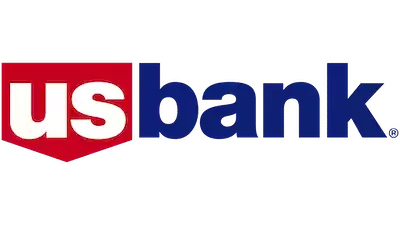Did you know that individuals who pay 10 overdraft fees or more per year make up almost 75% of the revenue banks make with overdraft charges? At around $35-$38 per overdraft charge, that’s nearly $400 per year spent on not having enough funds.
Many banks have removed the fees associated with overdrafts in light of the pandemic. However, some banks, like U.S. Bank, still retain their fees, just with looser restrictions than before.
U.S. Bank is one of the top 10 largest banks in the country. This Minneapolis-based bank offers several types of overdraft coverage you can choose from to protect your account if you have an overdraft charge.
Knowing what options you have as a U.S. Bank account holder can help you make better financial decisions in the future. If you ever need to make an overdraft charge, you can still find a way to waive the overdraft fee and make it all happen.
Are you ready to learn more about the U.S. Bank overdraft limit and fees? Let’s get started!
Recent Changes to U.S. Bank’s Overdraft Limit and Fees
In January 2022, U.S. Bank announced it would no longer charge customers a non-sufficient funds (NSF) fee. An NSF fee, also known as a returned fee, applied to checks and automatic payments that didn’t go through because of a lack of funds.
Around the same time, some of the best national banks nixed overdraft fees altogether. Most banks that let you overdraft had an associated fee, but that list grew smaller in light of the economic impact of the pandemic.
In the summer of that same year, U.S. Bank also increased the amount you can overdraw your account before incurring an overdraft fee. This limit went from $5 to $50 and came with an entire day you could use to pay back your negative balance without paying the $36 overdraft fee.
U.S. Bank Overdraft Limit and Fees Comparison
Many people only ask themselves “What is an overdraft fee?” when they first see one appear on their bank statement. Like most banks, first-time overdrafting customers can call customer service and discuss what they can do to waive the overdraft fee.
Overdraft charges are accepted or denied at the discretion of U.S. Bank. Many factors play a part, including:
- How long you’ve had your account
- How often you make deposits
- What overdraft coverage you select
- What your average account balance is
- Your overall account history
Overdraft limits are not something most banks publish for their customers like they would a credit score. While there’s no tried-and-true way to increase your overdraft limit, opting into overdraft coverage can help your case.
In comparison, PNC overdraft fees total up to $36 as well. Bank of America overdraft fees recently lowered from $35 to $10, saving customers $25 each time they overdrafted their accounts.
The Capital One overdraft limit made headlines as the bank decided to do away with overdraft fees altogether. This loss in revenue wasn’t something Chase was willing to give up, as the Chase overdraft limits still have a fee associated with them.
Related: Interested in U.S. Bank promotions you can take advantage of? See how U.S. Bank can help you achieve your financial goals.
The U.S. Bank Elite Money Market Savings Account has tiered interest rates that pay more for higher balances. U.S. Bank money market offers an APY of 4.00% (APY stands for annual percentage yield, rates may change). However, to earn interest you must keep a balance of $25,000.
U.S. Bank Checking Account Types
The U.S. Bank checking account you choose can play a large part in how much you pay for overdrafts. You can choose from Silver, Gold, and Platinum checking accounts:
- Silver: This basic account comes with an $8.95 monthly fee. However, you can waive that fee if you have a Package Money Market account and (a) a combined monthly direct deposit of $1,000 or more or (b) a combined average deposit balance of $1,500 or more.
- Gold: In addition to the Silver account, this Gold account gives you two non-U.S. Bank ATM transactions for free as well as discounted overdraft protection transfers. You can waive the $12.95 monthly fee if you open a personal loan or credit card from U.S. Bank.
- Platinum: There are no fees associated with this account, except for the $19.95 monthly fee you can waive if you have $25,000 in combined balances or a relationship with U.S. Bank Trust Services. That means you won’t pay for non-U.S. Bank ATM fees, money orders, personal checks, overdraft protection transfers, or cashier’s checks.
Opt for electronic statements only and you’ll receive $2 off each month, no matter which checking account you open.
Related: Here are some of the most critical credit card safety tips you shouldn’t ignore and a list of the best credit cards for 18-year-olds.
U.S. Bank Overdraft Protection Options
If you need cash now and aren’t sure where to turn, U.S. Bank’s overdraft protection can help you. Just remember that if your account balance is negative for seven calendar days, you’ll be charged an additional $36 Extended Overdraft Fee on the eighth day.
Let’s take a closer look at what overdraft options you have to choose from with U.S. Bank.
Standard Overdraft Coverage
Unless you’re the proud owner of a Safe Debit Checking account, your new U.S. Bank checking or money market account comes with Standard Overdraft Coverage. This type of coverage applies to checks, transactions you initiate with your checking account number, automatic bill payments, and recurring debit card transactions.
As we’ve discussed, U.S. Bank retains the right to approve or deny overdraft transactions at its discretion. Should the bank refuse to recognize the charge, you won’t incur an overdraft fee.
The $36 overdraft fee only applies if your overdraft transactions put your account into the negative over $50. If you overdraft your account for more than $50 but then bring that negative balance back north of that number by the end of the business day, you can avoid an overdraft fee.
U.S. Bank charges customers up to four times per day for overdraft fees, whether or not you overdraft more than that (and the bank approves those additional charges). This limits you to $144 per day in overdraft fees.
ATM & Debit Card Overdraft Coverage
If you’re looking for ATMs that let you overdraft, you’ll need to opt into specific overdraft coverage from U.S. Bank. If you don’t opt into this coverage, you won’t be able to overdraft your U.S. Bank account via an ATM.
U.S. Bank’s ATM & Debit Card Overdraft Coverage applies to ATM withdrawals and debit card transactions you make that overdraw your account. If the bank approves your overdrafting transactions, you may incur an overdraft fee.
You can set your preferences for this type of overdraft coverage with each account you own. The good news is that, if you change your mind, you can always make a different selection instead.
U.S. Bank Overdraft Fee Forgiven
If you had to overdraw your account but get paid today, you might be eligible for the U.S. Bank Overdraft Fee Forgiven. This overdraft coverage gives you extra time to bring your checking account balance back to a positive amount to avoid paying that pesky $36 overdraft fee.
If your checking or money market account is eligible for overdraft protection, you qualify for Overdraft Fee Forgiven. The clock starts the day you incur a negative balance by overdrawing your account.
If you deposit money to bring your account balance back to $0 or more on that same day before 11 p.m. ET, you can escape the $36 overdraft fee. Deposits that qualify include:
- Cash deposits
- Wire transfers
- ATM deposits
- Electronic transfers and deposits
- Internal transfers
The good news is that you don’t have to deposit an additional $36 to cover the overdraft fee. In fact, U.S. Bank’s mobile app will alert you that you need to deposit funds if you want to avoid a fee, and will tell you the specific amount you need to make it happen.
When you do pay back your balance to $0 or more, the app will confirm that you’ve done so. The message that displays will tell you whether or not you incurred a $36 overdraft fee so you can rest easy.
This type of coverage doesn’t work for new U.S. Bank accounts that are less than a month old. Most deposits take about five business days to clear if you have a new account.
Overdraft Protection
Finally, U.S. Bank allows you to connect other accounts in your name to automatically cover your overdraft balance. This transfer incurs a $12.50 fee and you’re limited to linking three accounts of your choice.
Eligible accounts include:
- Savings
- Secondary personal checking
- Personal line of credit
- Money market
- Reserve line of credit
- Credit card
- Home equity line of credit (HELOC)
When you link each account, you can tell U.S. Bank the order you want it to use in pulling out funds. If your negative balance is over $5, amounts will transfer in increments of $50.
If your overdraft transaction amounts to less than $5, only $5 will be transferred. If your negative balance is $50 or less, the fee to transfer that amount over is waived.
How to Set Up and Select Overdraft Coverage
If you’re not sure how to avoid bank fees, setting your bank account up so you can’t overdraw it can help. However, sometimes overdrawing your account can help in a pinch.
To select which type of overdraft coverage you want for each of your U.S. Bank accounts, you’ll need to go to your account dashboard. You can do this online or via the mobile app.
While the examples below show how to opt in for ATM and debit card transactions, you can make other overdraft selections here as well. Here’s how to select the coverage you want online:
- From your account dashboard, select “Customer Service.”
- Choose the “Self Service” tab and navigate to “Overdraft Options” under “Deposit Accounts & Debit/ATM Cards.”
- Select “Manage overdraft coverage for ATM & debit card transactions.”
- Verify that your chosen checking account appears and choose “Change Coverage.”
- Read the disclosure and select “Agree” to continue.
- Confirm your coverage selection and hit “Submit.”
If you like the mobile app better, start here:
- From your account dashboard, select “Account options” and “View account information.”
- Navigate to “ATM and Debit Card Overdraft Coverage.”
- Select “Change Coverage” after you’ve picked which account this change applies to.
- Review the disclosure and select “Agree” to continue.
- Confirm your selection with the “Submit” button.
Once you’ve confirmed your choices, U.S. Bank will remember them until you change them in the future. You can also call customer service if you’re unsure of what coverage you want or are having issues making your selection.
FAQs
Yes, U.S. Bank charges a $36 overdraft fee. This bank allows you to waive the overdraft fee if you meet certain requirements and only charges you up to four times per day for overdrafts.
You can avoid U.S. Bank overdraft fees by bringing your balance back up to $0 or more on the same day you overdrafted. If you overdraw your account by $50 or less, you can avoid an overdraft fee as long as you bring the balance up into the positive before the Extended Overdraft Fee applies (after seven consecutive calendar days).
Overdraft fees may not directly affect your credit score. However, failing to return your account to a positive balance after an extended period can certainly affect obtaining another bank account in the future.
Yes, you can overdraw your U.S. Bank account via an ATM if you opt into the correct coverage. You’ll need to visit your U.S. Bank account overdraft settings to allow this type of overdraft.
Bank Better with U.S. Bank
Overdraft fees and limits can be incredibly confusing and add up quickly. Knowing what fees you might incur with certain overdrafting behaviors can help you make better choices in the future.
We hope this article has helped you to understand more about what U.S. Bank overdraft limits and fees exist. With this knowledge, you know how much you’ll be charged if you do overdraft your account as well as how you can waive that fee.
Overdrafts are something we all struggle with, especially when money is tight. It’s not the end of the world if you overdraft your account so give yourself the room to learn and grow with U.S. Bank overdraft limits and fees.
- Get spotted up to $250 without fees
- Join 10+ million people using the finance super app
- Banking with instant discounts on gas, food delivery, groceries and more
- Start investing, saving, and budgeting for free










